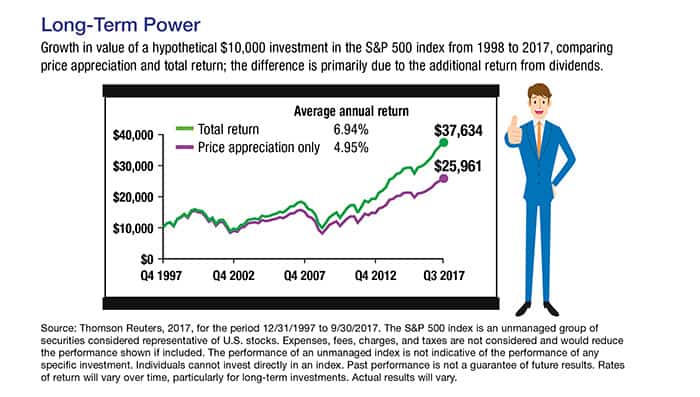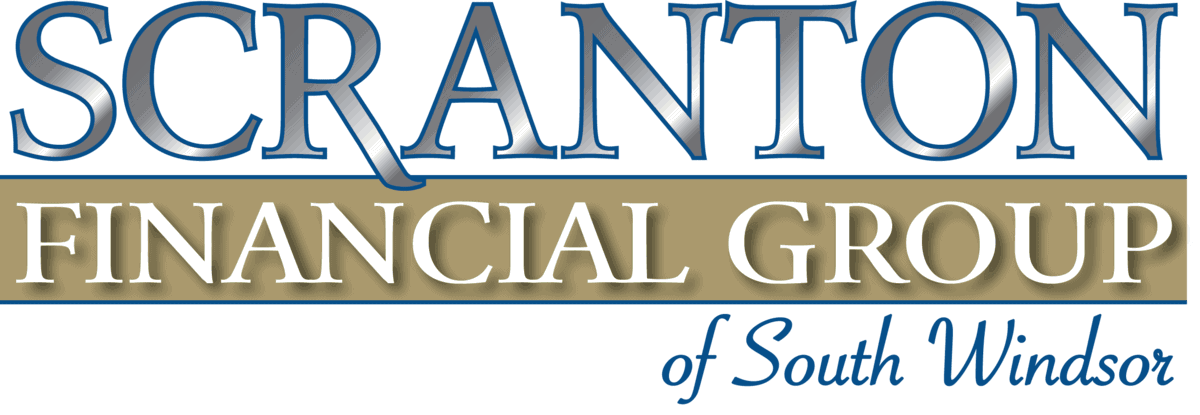
Owning shares of stock or stock funds might increase the value of your portfolio in one of two fundamental ways: capital appreciation (i.e., price increases) and dividend payments. Of the two, capital appreciation carries the greatest potential for return, but it also carries the greatest potential for loss. And any gains or losses are only reaped when you sell your shares.
By contrast, dividends typically offer more consistent modest returns that are paid while you hold your shares. For this reason, dividends have long been popular with retirees and others who are looking for regular income. But focusing on dividends can be appropriate for almost any investor, especially if dividends are reinvested to purchase additional shares. Although reinvesting dividends from individual stocks may not be cost-effective, mutual funds and exchange-traded funds (ETFs) generally offer an option to reinvest dividends and/or capital gains.
Growth and Volatility
In general, more established companies tend to pay dividends, and these companies may not have as much growth potential as newer companies that plow all of their earnings back into the company. Even so, dividends can boost total return. A 2015 study found that dividends had accounted for about one-third of the total return of the S&P 500 index since 1956, with the other two-thirds from capital appreciation. In the third quarter of 2017, more than 80% of S&P 500 stocks paid a dividend with an average yield just under 2%. Many mid-size and smaller companies also paid dividends.1
Because dividends are by definition a positive return, even during a down market, dividend-paying stocks may be less volatile than non-dividend payers. However, dividend stocks tend to be more sensitive to rising interest rates; investors looking for income may move away from stocks if less risky fixed-income investments offer comparable yields.
Quarterly Payments
Dividends are typically paid quarterly in the form of cash or stock. The amount is set by the company’s board of directors and can be changed at any time. Dividends can be expressed as the dollar amount paid on each share or as yield — the annual dividend income per share divided by the current market price. When the share price falls, the yield rises (assuming dividend payments remain the same), enabling investors who reinvest their dividends to buy more shares that have the potential to grow as market performance improves.
Investing in dividends is a long-term commitment. In exchange for less volatility and more stable returns, investors should be prepared for periods where dividend payers drag down rather than boost an equity portfolio. The amount of a company’s dividend can fluctuate with earnings, which are influenced by economic, market, and political events. Dividends are typically not guaranteed.
The return and principal value of all investments fluctuate with changes in market conditions. Shares, when sold, may be worth more or less than their original cost. Supply and demand for ETF shares may cause them to trade at a premium or a discount relative to the value of the underlying shares.
Mutual funds and ETFs are sold by prospectus. Please consider the investment objectives, risks, charges, and expenses carefully before investing. The prospectus, which contains this and other information about the investment company, can be obtained from your financial professional. Be sure to read the prospectus carefully before deciding whether to invest.

